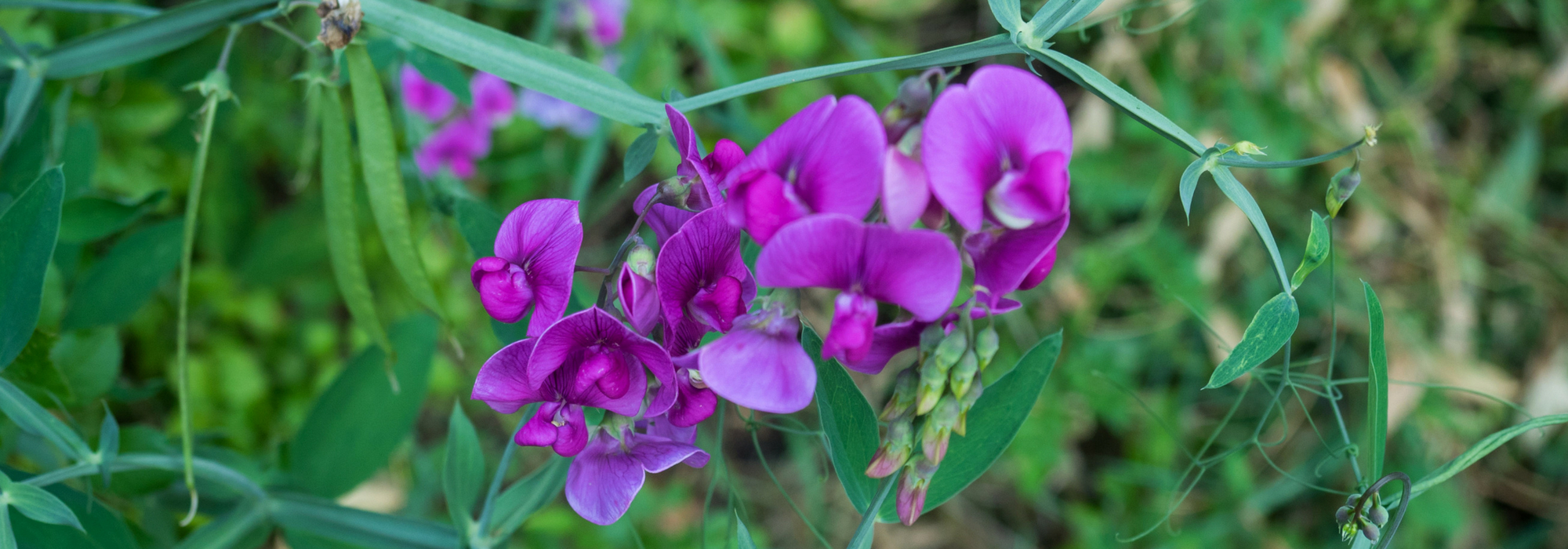
Sweet peas: planting, growing, care and use
Contents
Sweet peas in a nutshell
- Annual sweet peas offer the most fragrant and varied varieties in terms of colours and flower size.
- Perennial varieties have the advantage of re-emerging each spring with increasing vigour and recolonising a trellis without special care.
- They are appreciated as a climbing plant with their rustic, enchanting appearance that beautifies fences in just a few weeks.
- Dwarf and bush varieties are used in borders, beds, or containers.
- Sweet peas thrive in rich, deep, and consistent soil that ensures good moisture for the roots.
A word from our expert
Sweet peas climb or spread across the ground thanks to their stems equipped with tendrils that can grow over 2 m long in a year. Sweet peas are a godsend for quickly flowering an unsightly fence or creating a visual screen, for example on a balcony. Compact dwarf varieties can make floriferous borders or fill a planter with minimal effort! But the benefits of sweet peas don’t stop there!
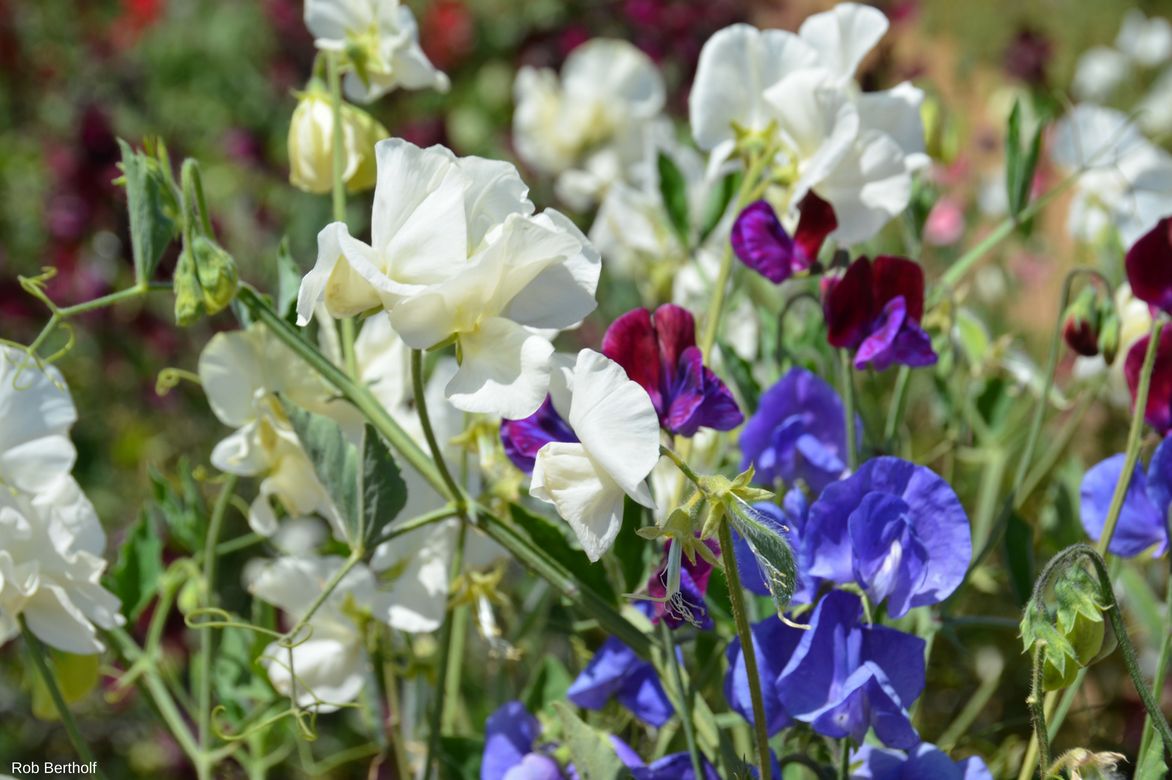
A medley of sweet peas divinely scented.
Annual varieties are remarkable for their sweet fragrance and varied hues, ranging from soft to intense. The forms with very large flowers adorned with more or less undulating petals are perfect for creating refined bouquets that exude originality and delicacy. The range of colours offers the possibility to create multiple atmospheres, from rustic and romantic to exotic or contemporary.
Sowing directly in place is child’s play if you take care to deeply loosen fertile soil that is well-exposed and soak the seeds in water. Keep the soil moist and simply guide the first stems towards the support so they can rise quickly.
Seed merchants offer mixes of tried-and-true varieties, beloved in our grandmothers’ gardens and delightfully fragrant, ensuring generous flowering. Modern varieties offer original shades and forms that will surprise your visitors.
Description and Botany
Botanical data
- Latin name Lathyrus sp.
- Family Fabaceae
- Common name Sweet pea, Gesse
- Flowering from June to September
- Height between 20 cm and 2 m
- Exposure sun or partial shade
- Soil type rich, deep, consistent but drained
- Hardiness Very good for perennial species
The genus Lathyrus, commonly known as “gesse”, includes nearly 150 herbaceous species, relatives of edible peas (Pisum) and vetches (Vicia). Some species of Lathyrus are edible. There are 54 species in Europe and 59 in Turkey! They are common in meadows and fallow land but have much smaller flowers than cultivated forms!
The climbing plant often has winged stems, which helps to differentiate it from vetch, as well as tendrils that allow it to cling to various supports.
The term sweet pea refers to a category of annual cultivars with large flowers that are generally fragrant, derived from Lathyrus odoratus. This annual climber, likely native to Sicily and south-eastern Italy, had, according to the writings of John Ray in his Historia Plantarium (1966), small fragrant flowers that were purple or dull burgundy. However, we will also discuss a few perennial species, Lathyrus vernus and latifolius, which are included in our catalogue.
Sweet peas belong to the family Fabaceae (syn. Leguminosae) and the subfamily Papilionaceae due to the shape of the flowers resembling a cloud of butterflies.
The winged, quadrangular stems, somewhat brittle, bear light green alternate foliage, which is unique as it consists solely of a pair of ovate leaflets measuring 2 to 3 cm long, extended by leaflets transformed into tendrils. A pair of stipules (small leaf-like organs) marks the base of the petiole.
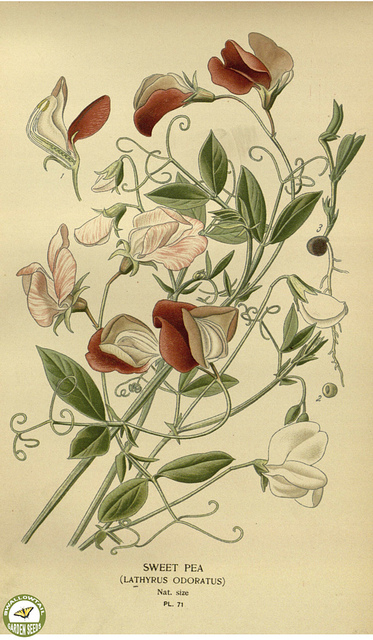
Lathyrus odoratus – botanical illustration
Flowering occurs from June to August but can extend for 5 months. The flowers often measure more than 2 cm and are grouped in axillary clusters, attached to the stems by a long stalk that allows for bouquet making. During the Victorian era, this use was particularly popular, leading to the selection of the Grandiflora group, especially by the British breeder Henri Eckford (1823-1905). The Spencer type was created around 1900, characterised by large flowers with undulating petals that have given rise to many current cultivars. The colours are pastel, tangy, or intense, ranging from white, blue, mauve, purple, pink, and pale yellow, offering a solid, bicolour, flamed, or speckled corolla.
The papilionaceous flowers have 5 free petals, with the uppermost, which is also the largest, taking a banner shape, while the others have a shape intermediate between the lip and the tube. There are 10 stamens. The pistil of Lathyrus is distinguished from that of Vicia by its straight or coiled shape, and the presence of hairs only on the upper face, whereas it is entirely hairy or bearded at the base in vetches.
The flowers of the sweet pea emit a strong and delicate fragrance, which has a sweet floral aroma with soft, honeyed, and musky notes, very feminine. Note that some hybrids are scentless as well as the perennial peas. It is impossible to extract the fragrant essence from the flowers, but perfumers have managed to recreate these scents, such as Givenchy with his fragrance Amarige d’Amour (2003) or Caron with The Sweet Pea from My Home (1927).
The fruit is a flat pod that twists, expelling its seeds at a distance. These seeds are toxic, while the flower of the sweet pea can be consumed in salads (source Interfel).
Sweet peas are easy to grow, very popular in cottage gardens and those of our grandmothers. They can be sown or planted from buckets, in open ground, in deep pots, or hanging baskets to cascade down like garlands. Sweet peas root quite deeply in the soil to draw water and nutrients. Just remember to remove faded flowers to encourage further blooming before the pods form.
There are climbing varieties reaching 1.5 or 2 m, bushy ones at 70 or 80 cm, and dwarf ones at 30 cm.
 Several colours of sweet peas: Lathyrus ‘Alan Titchmarsh’, Lathyrus ‘Wiltshire Ripple’, Lathyrus ‘Beaujolais’, Lathyrus ‘Route 66’, Lathyrus ‘Cupani’.
Several colours of sweet peas: Lathyrus ‘Alan Titchmarsh’, Lathyrus ‘Wiltshire Ripple’, Lathyrus ‘Beaujolais’, Lathyrus ‘Route 66’, Lathyrus ‘Cupani’.
Read also
Lathyrus: Planting, Growing, and CaringThe main species and varieties

Lathyrus odoratus Antique Fantasy mixed - Sweet Pea Seeds
- Flowering time July to September
- Height at maturity 1,80 m

Lathyrus odoratus Elegant Ladies - Sweet Pea Seeds
- Flowering time July to September
- Height at maturity 1,80 m
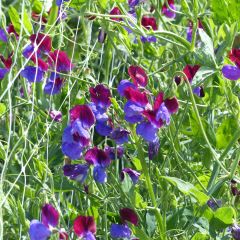
Lathyrus odoratus Cupani - Sweet Pea Seeds
- Flowering time July to October
- Height at maturity 2,50 m

Lathyrus odoratus Fragrantissima - Sweet Pea Seeds
- Flowering time July to September
- Height at maturity 2 m
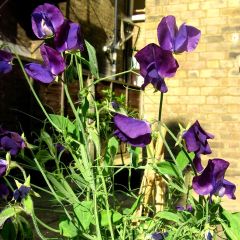
Lathyrus odoratus Matucana - Sweet Pea Seeds
- Flowering time July to September
- Height at maturity 1,80 m
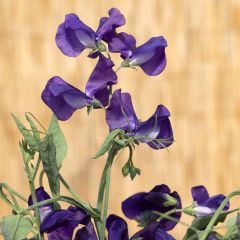
Lathyrus odoratus King Size Navy Blue - Sweet Pea Seeds
- Flowering time July to September
- Height at maturity 2 m
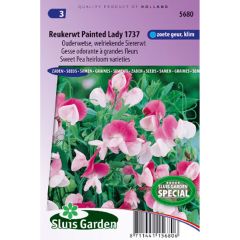
Lathyrus odoratus Painted Lady - Sweet Pea Seeds
- Flowering time July to October
- Height at maturity 1,80 m
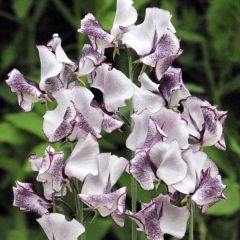
Lathyrus odoratus Nimbus - Sweet Pea Seeds
- Flowering time July to October
- Height at maturity 1,80 m
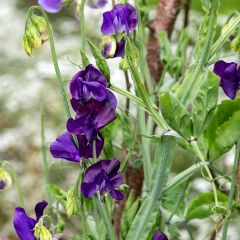
Lathyrus odoratus Blue Velvet - Sweet Pea Seeds
- Flowering time July to September
- Height at maturity 1,80 m
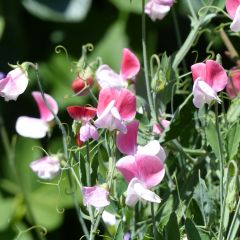
Lathyrus odoratus Cupid Pink - Dwarf Sweet Pea Seeds
- Flowering time July to October
- Height at maturity 20 cm

Lathyrus odoratus Bijou Mixed - Dwarf Sweet Pea Seeds
- Flowering time July to November
- Height at maturity 55 cm
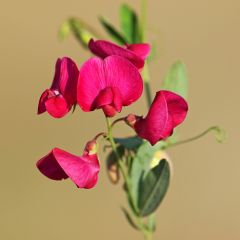
Lathyrus latifolius Red Pearl - Broadleaf Sweetpea
- Flowering time July to October
- Height at maturity 1,80 m
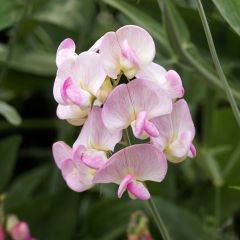
Lathyrus latifolius Pink Pearl - Broadleaf Sweetpea
- Flowering time July to October
- Height at maturity 1,80 m
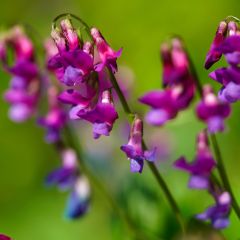
Lathyrus vernus
- Flowering time May, June
- Height at maturity 40 cm
Discover other Sweet Pea seeds
View all →Available in 1 sizes
Available in 1 sizes
Available in 1 sizes
Available in 1 sizes
Available in 1 sizes
Available in 1 sizes
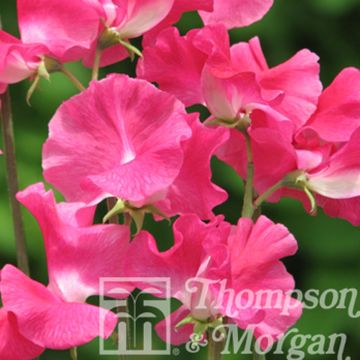
Available in 1 sizes
Available in 1 sizes
Available in 1 sizes
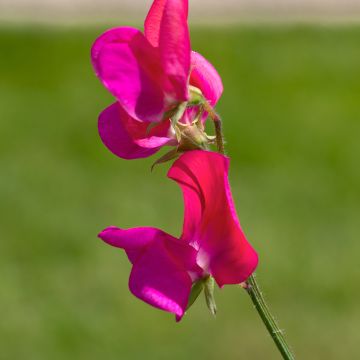
Available in 1 sizes
Sowing sweet peas
Where and when to sow?
You have the choice between sowing in autumn and that of spring, knowing that the sowing month varies according to the growing conditions:
- In a greenhouse or indoors, in a cool room or on a windowsill, sow in March for a final planting in April-May after the last severe frosts;
- under unheated cover, sow in October-November if the temperature does not drop below 10°C. It is possible to sow in March, but the plants will be less robust and later;
- directly in open ground, sow from March-April depending on the climate. You can also transplant seedlings from spontaneous sowing observed in the garden as early as autumn if the mild climate allows it!
- Perennial sweet peas are preferably sown in autumn to encourage their establishment.
How to sow?
Germination takes 10 to 20 days at a temperature of 15 to 18°C.
1- Direct sowing in place
- Deeply aerate the bed with a fork and then add a spadeful of compost or leaf mould to your garden soil before sowing or planting your young plants.
- Sow in clusters (groups of 2 or 3 seeds) at a depth of 2.5 cm. Leave a minimum distance of 30 cm between two clusters, which is about 4 plants per m².
- Mulch the soil to maintain moisture once the seedlings have emerged.
- Be attentive to snails and slugs that love to devour young plants. Set up traps or spread Ferramol pellets, which are harmless to wildlife.
2- Sowing under cover of annual species
- Harvest seeds from annual sweet peas contained in dry pods during summer or autumn. Do not wait for the pods to open as they will be immediately expelled.
- Soak the seeds in water overnight before sowing.
- Fill 10 cm diameter pots with potting soil.
- Push 3-4 seeds 2.5 cm deep into each pot and then lightly press down with your finger.
- Water and place the crop under a cold frame or in a greenhouse depending on the sowing period.
- Initially cover the pot with glass or transparent film to retain moisture, warmth, and allow light to pass through. Remove the film as soon as the cotyledons emerge.
- Regularly ventilate the crop under the cold frame during the day to prevent the plants from rotting.
- Do not let your plants grow in pots for too long as this will affect their establishment. Repot them into deeper pots if you need to wait for the end of frosts.
Discover our tutorial: How to successfully sow sweet peas?
Planting
Where to plant?
Plan to install your sweet peas at the base of a trellis or sunny fence for abundant flowering, in fertile, deep, and rather cool soil, regardless of pH. Be aware that red or purple colours tend to fade if the sun is too intense. Reserve these colours for partial shade, especially south of the Loire.
When to plant?
Wait until the end of the severe frosts to plant your buckets in the ground, especially if the young plants come from a warm greenhouse.
How to plant?
- When the seedlings have reached the stage of the second pair of leaves, cut the tip of each stem to encourage branching.
- Water regularly but without excess to promote the growth of the stems.
- Apply flowering plant fertiliser and remove faded flowers to encourage abundant flowering from June to August.
Perennial sweet peas require spacing of 60 cm to 1 m along a fence or wall with trellis. Even if the growth is disappointing in the first year, remember that the clump thickens over the years.
For pot cultivation, choose a container that is at least 30 cm deep. Check for drainage holes, place a layer of gravel or clay balls at the bottom, then fill it with a good potting mix. Sow directly or transplant young plants.
Pruning and maintenance
To care for your sweet peas:
- Pinch the stems when they reach 15 to 20 cm high to encourage bushier plants.
- Incorporate manure compost at the beginning of spring for perennial species as well as in the area designated for sowing annual sweet peas.
- Apply liquid fertiliser for flowers every two weeks to potted plants.
- Remove wilted flowers regularly, keeping just a few pods to harvest seeds when they are dry.
- Ensure a cool soil is maintained as even temporary drought halts the production of new buds.
Sweet peas are fairly resistant to diseases but occasional attacks of downy mildew (yellow spots and white fluff on the underside) can occur during cool, damp springs, and powdery mildew (white fluff, slowed growth, and poor flowering) can appear during dry springs (see Q&A). Aphids can sometimes be virulent, located at the tips of the stems. Take the opportunity to pinch the stems or the last leaves and apply black soap or fern manure every 10 days if necessary.
Associations
Sweet peas have a touching and quaint flowering that brings a lot of charm to bouquets, hanging displays, and any support they valiantly colonise in a season. They are just as charming and wandering in summer borders, using neighbouring plants or bushes as support. They are inseparable from cottage gardens, much like peonies, hollyhocks, foxgloves, peach-leaved campanulas, and columbines that they can accompany.
For a natural scene, plant them at the back of a flower meadow or a border of gaura, Lavatera trimestris, coreopsis, and cornflowers… Play with the range of sweet pea tones to create vibrant scenes by combining, for example, the orange of nasturtiums and the purple of Lathyrus ‘Cupani’.

An idea for pairing in a border: Lathyrus ‘Albutt Blue’, Linaria purpurea ‘Canon J. Went’, rose ‘Lavender Dream’, rose ‘Comte de Chambord’, Tradescantia virginiana ‘JC Weguelin’.
They can also create beautiful tapestries or borders, mixing colours like those of sweet pea Bijou. The fertile and watered soil of the vegetable garden is equally suitable for sweet peas that you can train to climb on willow tipis.
⇒ More pairing ideas: Pairing sweet peas
Useful resources
Discover:
- Our collection of sweet pea seeds
- Our advice sheet: Sweet peas: the most beautiful varieties
- Our advice sheet: How to make sweet peas climb
- Our advice sheet: How to grow sweet peas in pots?
- Successfully growing sweet peas: from sowing to maintenance
Frequently asked questions
-
The leaves of my sweet pea are turning yellow and are white underneath. What can I do?
A cool and rainy spring encourages downy mildew. This fungus causes a white fluff on the underside of leaves, which eventually dry out. The growth of stems is eventually slowed down. Be quick to remove the diseased leaves and apply a fungicidal treatment if necessary, such as horsetail manure.
-
My young sowings of sweet peas carried out indoors have all rotted within a few days. What should I do to prevent this?
Damping off caused by various fungi is unfortunately common when the atmosphere is too humid or the temperature is too low. Sow thinly in sterilised seed compost and remember to ventilate the frame or room regularly. Also, place the seedlings in a warmer room and water moderately.
-
The leaves of my sweet peas are covered in white. What should I do?
Powdery mildew appears when the plant suffers from dryness at the roots. It is enough for the foliage to be wet to induce contamination by the spores. Ensure to keep the substrate cool with spaced but deep watering and mulch the soil with 5 cm of wood chip (BRF), dead leaves, grass clippings, or lin or miscanthus pales for a more aesthetic effect.
- Subscribe!
- Contents
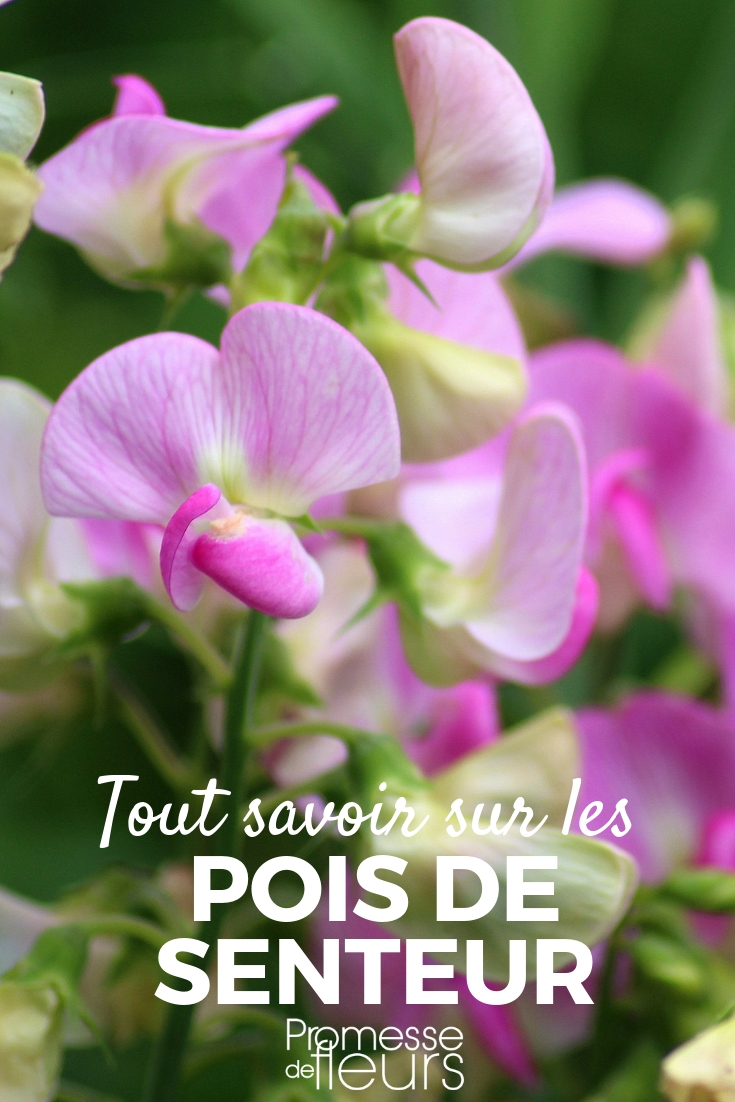

































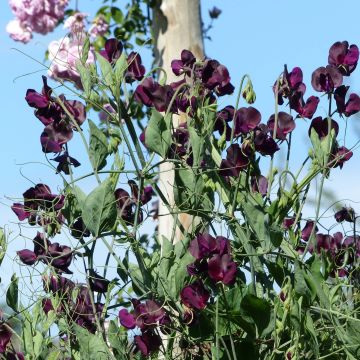

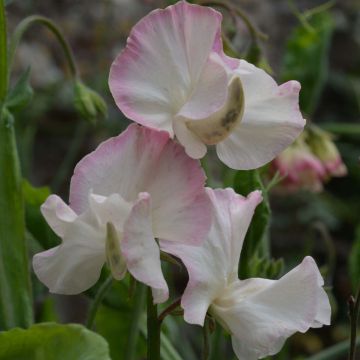
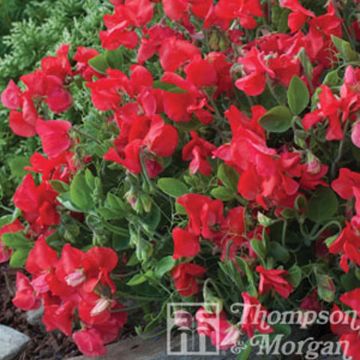
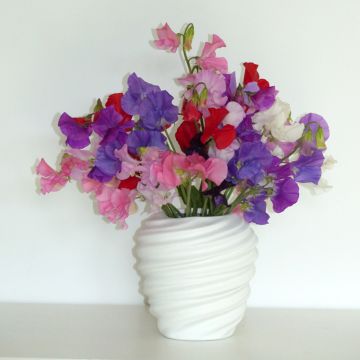
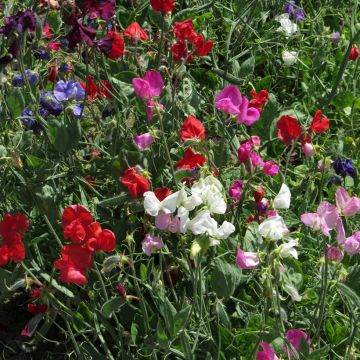
Comments